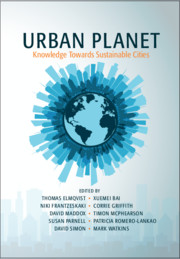In discussions about cities of the future, or perhaps, the future of cities, it is worth noting that one of the largest shifts to urban centers in world history is projected to occur in India in the next few decades (United Nations 2011). It is estimated that the middle class in Indian cities will more than triple from 31 million in 2013 to 114 million in 2025 (Economic Times 2011). Demographically, India is expected to add at least 10 million people to the job market each year for the next two decades (FICCI-Ernst & Young 2013). And Indian cities are estimated to be responsible for 75 percent of the country’s GDP in the next 15 years, with plans for a hundred new smart cities in the pipeline (Government of India 2014). Transitions of such scale place unprecedented pressures on energy resources: there is little doubt that the urban context promises to be a central determinant of the future of Indian energy, and by extension, of the future of India’s development.
Unravelling this future, however, is not straightforward. India is starting from a low base of development and faces enormous unmet energy needs, poor energy access, and increasing pressure from interrelated environmental concerns. How then, can it urbanize in a manner where energy needs are met, the local and global environment is preserved, and the economy and energy security are not put at risk?
One urban component that can help answer this question is the city’s built environment. There are three reasons for this. First, much of the energy consumption in cities takes place in buildings. Buildings consume more than a third of India’s electricity, and this number is set for dramatic increase with development and access to improved lifestyles (Kapoor et al. Reference Kapoor, Deshmukh and Lal2011). Yet, buildings are largely untapped in energy planning and the scale of unexploited energy efficiency potential is estimated to be of the order of 3 gigawatts per year (Natural Resources Defense Council 2012). Second, timing is of essence. Two-thirds of the commercial and high-rise residential buildings to exist between 2010 and 2030 are yet to be built (Kumar et al. Reference Kumar, Kapoor, Rawal, Seth and Walia2010). And given that buildings form long-lasting components of the economy and shape path dependencies for energy-use patterns, the next 15 years present a real occasion to lock in sustainable (or risky) consumption patterns. Third, unlike traditional pathways to meeting energy goals, the built environment offers benefits that go well beyond energy savings. These include carbon mitigation, improved energy security, job creation, and increased socioenvironmental outcomes.
Given this context, how can the role of India’s buildings be reimagined to enable better urban energy futures? Three interrelated aspects of the built environment can influence a transformative change in its energy use. The first of these is the technical, or the potential of available, accessible, and affordable energy saving technologies in the market. Most studies currently focus on this issue, in the form of macroeconomic and building-level analyses that determine the need and potential of technical efficiency. The next is the institutional or the formal and informal arrangements of regulations, finances, and capacities, which influence building energy policies and which are often in the form of voluntary or mandatory building energy codes or rating systems. And finally, it is the behavioral or the role of individual and organizational lifestyles in managing energy demand. Increasingly, a growing international literature points to the substantial potential that can be harnessed from tapping into behavioral solutions for energy savings, beyond technological fixes.
This framing deviates from India’s current technical approach to the built environment, which no doubt is an essential basis for decision-making. But this needs to be complemented with a knowledge base of institutional functioning, such as the governance of building energy policies, and equally, with the social and behavioral practices that enable energy savings. Ultimately, energy use in buildings is determined not just by how they designed, but also how they are built, commissioned, and used.
Broadening current approaches to include these interrelated aspects of the built environment will help create the often envisioned cities of the future. Moreover, since India and other transitioning economies are at the verge of much new construction, there is opportunity to configure urban infrastructure in a manner that can shape energy-use preferences and practices. Such an alternative conceptualization will require emphasizing the relationships between consumption trajectories, development, and socioenvironmental priorities. India’s built environment, where most of the energy demand infrastructure is yet to be built, provides a concrete space in which to stimulate such a shift.



